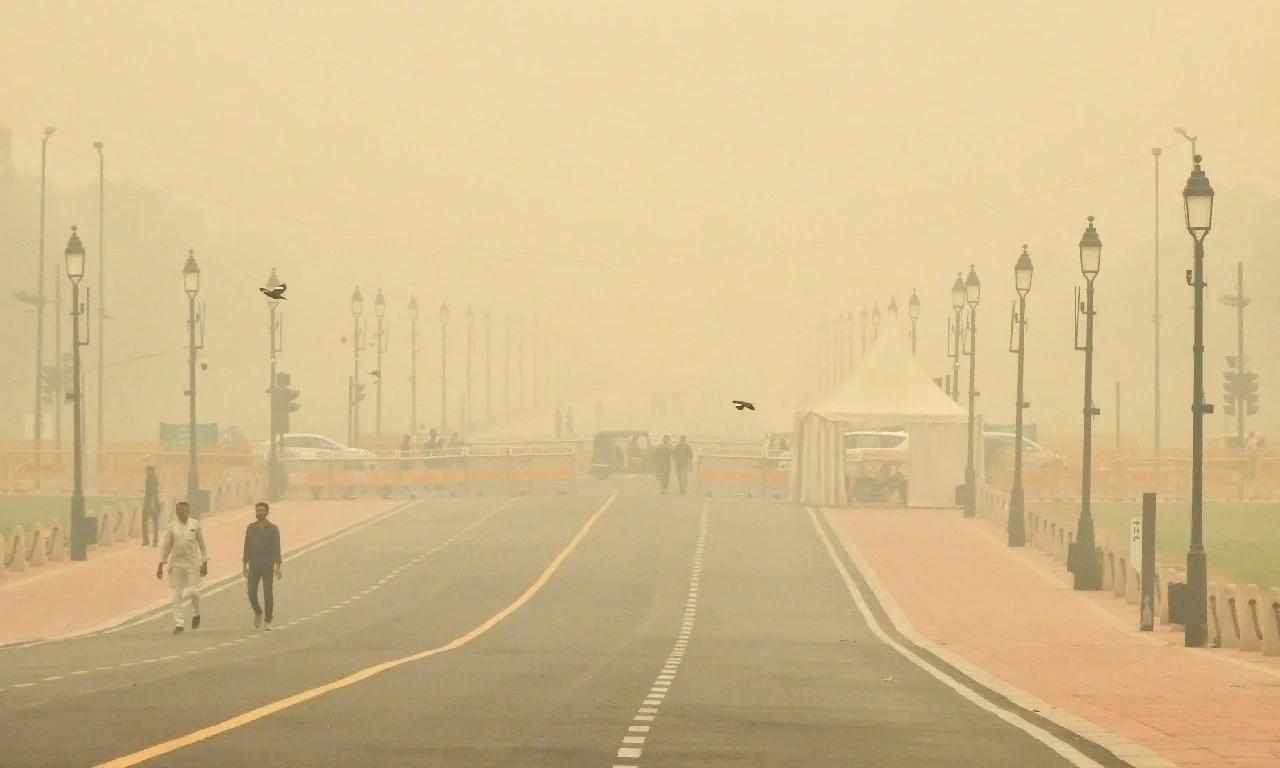
India tops global air pollution deaths; Delhi sees surge in infections
text_fieldsNew Delhi: Air pollution has emerged as the “largest existential threat” to humans, killing over nine million each year globally, killing more people in India than the rest of the world, showed a study.
From causing low birth weight to affecting and damaging nearly all organs, including eyes, lungs, skin and heart, and even denting mental health, toxic air has become a “slow poison”, spiking deaths and diseases in India, says a study published in the journal Lancet Planetary Health Pollution in 2020.
In 2019, it resulted in 1.67 million deaths in India. The 2019 death toll attributed to air pollution in India accounted for 17.8 per cent of all deaths in the country in 2019.
In 2019, India's average particulate matter concentration was 70.3 micrograms/cubic metre -- the highest in the world.
Cut to 2023, on Friday morning, the Air Quality Index (AQI) in Delhi alone surged past 500 in several parts of Delhi-NCR, a staggering 100 times higher than the limit considered healthy by the World Health Organization (WHO).
 Also Read:Weight loss surgery leads to decline in oral health: Study
Also Read:Weight loss surgery leads to decline in oral health: Study
Engulfed in thick toxic smog, the AQI on Friday plummeted to the “severe plus” category in several parts of the national capital.
It remained around 550 for most part of the day with dangerous levels of PM2.5 and PM10, along with a thick blanket of smog that also reduced visibility to less than 500 metres in some places.
Besides creating respiratory issues like asthma, and bronchitis, the deteriorating pollution level in the city is creating a slew of patients with watery eyes, itchy throat, doctors said here.
Doctors and authorities have urged Delhiites to take the necessary precautions, such as wearing masks and staying indoors whenever possible, to safeguard their health amidst this alarming pollution crisis.
“The number of deaths is only going to be rising with the rise in air pollution levels in our country, especially in the Indo-Gangetic belt. It’s what we're experiencing these days,” Dr. Vivek Nangia, Principal Director & Head, Pulmonology, Max Super Speciality Hospital, Saket, told IANS citing the 2019 Lancet study figures.
 Also Read:YouTube to limit video recommendation to teens on sensitive topics
Also Read:YouTube to limit video recommendation to teens on sensitive topics
In fact, the Air Quality Life Index (AQLI) report for 2023 by the University of Chicago’s Energy Policy Institute in August showed that air pollution is shortening lives in the national capital territory of Delhi -- the most polluted city in the world -- by 11.9 years.
Measuring life expectancy, the researchers said PM2.5 is the greatest threat to human health in India. It takes 5.3 years off the life of the average Indian compared to cardiovascular diseases (4.5 years) and child and maternal malnutrition (1.8 years).
Dr Dhiren Gupta, senior consultant, department of paediatric, Sir Ganga Ram Hospital, calls air pollution a “slow poison”.
“It starts affecting the unborn, to newborns, and to people of all ages. It can cause poor birth weight, and allergies later in life; affects not only the lungs but also the heart; makes viral infections and allergies more lethal; leads to permanent damage to the lungs; even in non-asthmatic patients it induces recurrent cough; and affects eyes, brain, skin, heart,” he told IANS.
“Importantly, children are more affected as their height is less and have a faster respiratory rate than adults,” Dr. Gupta said.
Indeed, the brunt of breathing bad air is most deadly on children under 5 years of age -- with close to 12 deaths taking place an hour in India, as per a 2016 WHO report.
 Also Read:Antibiotics now ineffective for common childhood infections: Lancet
Also Read:Antibiotics now ineffective for common childhood infections: Lancet
In 2016, 101,788 children under the age of five died prematurely due to outdoor and household air pollution. Close to seven children die every hour in India due to outdoor air pollution alone, and more than half of them are girls.
Other vulnerable groups include people aged over 60, those who already have some underlying comorbid conditions, like chronic lung disease like bronchial asthma, chronic obstructive pulmonary disease, interstitial lung disease, allergies, then people who have chronic heart disease, people who have liver disease, kidney disease, brain disease, so any kind of disease, those who are on some kind of immunosuppressive therapies, Dr Nangia told IANS.
Further, two recent studies have also linked air pollution with diabetes and antibiotic resistance. Both are on the extremes in India and have the potential to turn fatal, if not addressed properly.
Each year, policymakers come up with short-term solutions like putting off construction work, closing schools, etc. However, the need is to develop strong solutions such as putting a curb on stubble burning, adopting cleaner energy sources, and implementing stricter regulations on industrial emissions, among others.
To survive the bad air days, it is essential to “wear N95 masks when out and about, be compliant with regular medications, avoid outdoor activities in peak pollution hours, take a balanced diet and seek medical help should the symptoms worsen,” Dr Arunesh Kumar, senior consultant & Head of Pulmonology at Paras Hospital, Gurugram said.
With inputs from agencies
























